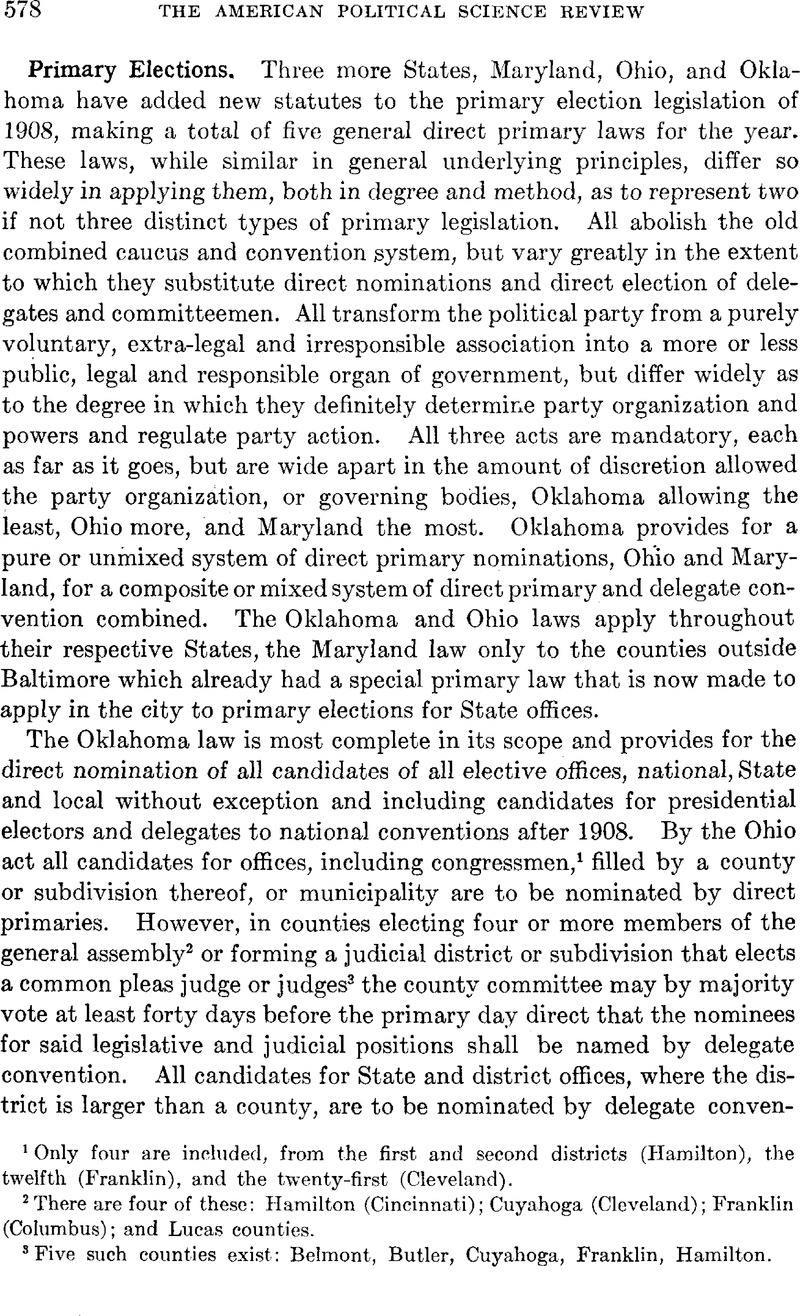No CrossRef data available.
Published online by Cambridge University Press: 02 September 2013

1 Only four are included, from the first and second districts (Hamilton), the twelfth (Franklin), and the twenty-first (Cleveland).
2 There are four of these: Hamilton (Cincinnati); Cuyahoga (Cleveland); Franklin (Columbus); and Lucas counties.
3 Five such counties exist: Belmont, Butler, Cuyahoga, Franklin, Hamilton.
4 Where representation in the convention is in proportion to population or voting strength such a method will still practically give effect to the will of the party electors. But, where, as in Maryland, representation is decidedly unequal, a candidate may easily receive a majority or plurality of the party votes and yet fail of nomination. This device seems clearly designed to give the rural counties essentially the same political advantage over the city of Baltimore, in making nominations for State offices, that they possess with respect to representation in the State legislature.
5 By inference this would also seem to be the case in Ohio.
6 The political significance of this system or device will be more readily understood in the light of the fact that Baltimore City, with almost 43 per cent of the population of Maryland, has only 4 of 27 members in the senate, and 24 of 101 members in the house of delegates, or scarcely 22 per cent of the joint vote in the general assembly.
Comments
No Comments have been published for this article.